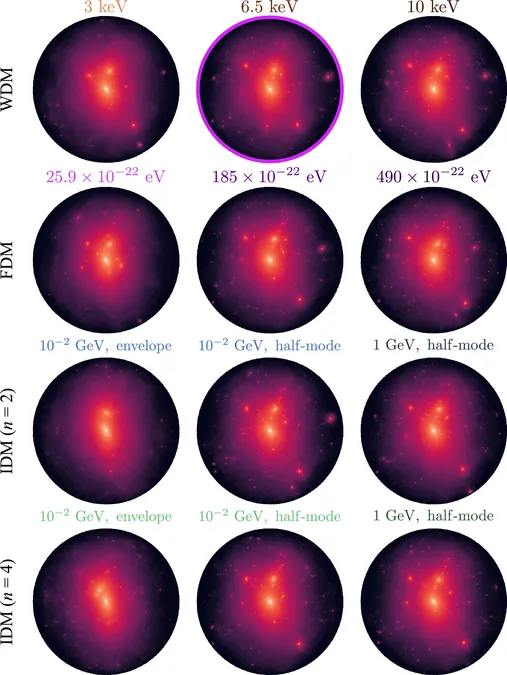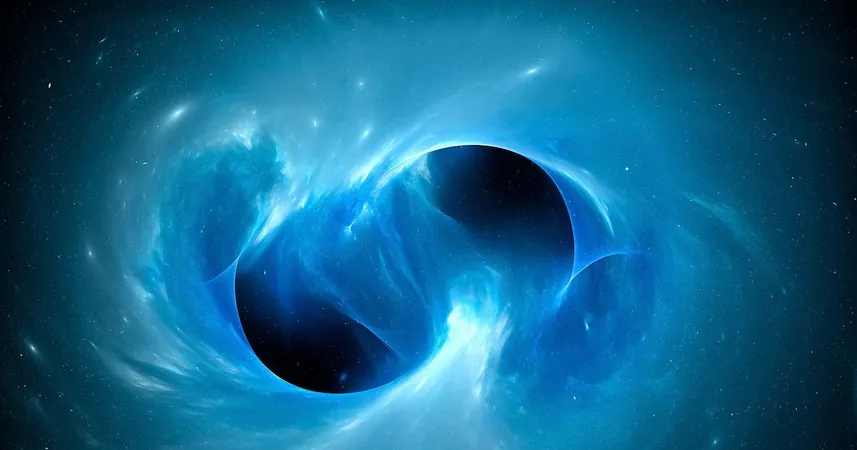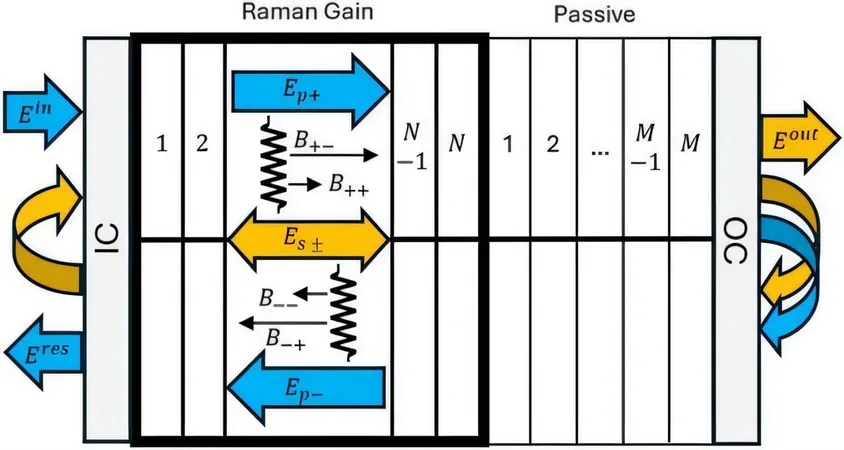
Unlocking the Secrets of Dark Matter: New Simulations Shed Light on Our Universe
2025-06-16
Author: Jacques
A Galactic Breakthrough
In an exciting leap for astrophysics, a research team from the University of Southern California (USC) has utilized supercomputer simulations to create digital twins of our Milky Way galaxy. This groundbreaking project, dubbed "COZMIC" (Cosmological Zoom-in Simulations with Initial Conditions beyond Cold Dark Matter), aims to unravel the mysteries surrounding dark matter, the enigmatic substance that constitutes approximately 85% of the universe's mass.
The Pioneers Behind COZMIC
Led by cosmologist Vera Gluscevic from USC, along with Ethan Nadler and Andrew Benson, the COZMIC project represents an innovative approach to studying dark matter's influence on galaxy formation and evolution. Their findings, published recently in *The Astrophysical Journal*, mark a significant milestone in understanding the interactions between visible and invisible matter in our cosmos.
Understanding Dark Matter's Role
Dark matter remains elusive, detectable only through its gravitational effects on visible matter. For decades, scientists have speculated about its nature, particularly how it binds galaxies together despite their high rotational speeds. The idea originated from Swiss physicist Fritz Zwicky in 1933, and the quest to comprehend dark matter has only intensified since.
Innovative Simulations to the Rescue
With COZMIC, the researchers employed new physics models beyond traditional particle physics to conduct detailed cosmological simulations. Gluscevic states, "For the first time, we're simulating galaxies under radically different physical laws, enabling us to compare these simulations against real astronomical observations." This method opens the door to fresh insights into dark matter's properties and interactions.
Exploring Dark Matter Scenarios
The COZMIC research involved various theoretical scenarios of dark matter behavior:
1. **Billiard-Ball Model**: This scenario imagines dark matter particles colliding with protons, akin to billiard balls, smoothing small-scale structures and eliminating potential satellite galaxies within the Milky Way.
2. **Mixed-Sector Model**: Here, some dark matter particles interact with normal matter while others evade interaction entirely.
3. **Self-Interacting Model**: This approach simulates dark matter interacting with itself, influencing galaxy formation from the universe's beginnings to the present.
A New Era for Dark Matter Research
The COZMIC team's advances represent a monumental step towards deciphering the true nature of dark matter. By aligning their synthesized galaxies with real observatory data, they aim to pinpoint which simulation most closely mirrors our universe.
"This is a pivotal moment—we're finally asking, 'Which version of the universe resembles ours most closely?'" says Gluscevic. The team anticipates Deepening their research by directly correlating their simulations with telescopic data, potentially revealing the hidden signatures of dark matter in real galaxies. This might be the breakthrough we need to demystify the cosmos!









 Brasil (PT)
Brasil (PT)
 Canada (EN)
Canada (EN)
 Chile (ES)
Chile (ES)
 Česko (CS)
Česko (CS)
 대한민국 (KO)
대한민국 (KO)
 España (ES)
España (ES)
 France (FR)
France (FR)
 Hong Kong (EN)
Hong Kong (EN)
 Italia (IT)
Italia (IT)
 日本 (JA)
日本 (JA)
 Magyarország (HU)
Magyarország (HU)
 Norge (NO)
Norge (NO)
 Polska (PL)
Polska (PL)
 Schweiz (DE)
Schweiz (DE)
 Singapore (EN)
Singapore (EN)
 Sverige (SV)
Sverige (SV)
 Suomi (FI)
Suomi (FI)
 Türkiye (TR)
Türkiye (TR)
 الإمارات العربية المتحدة (AR)
الإمارات العربية المتحدة (AR)